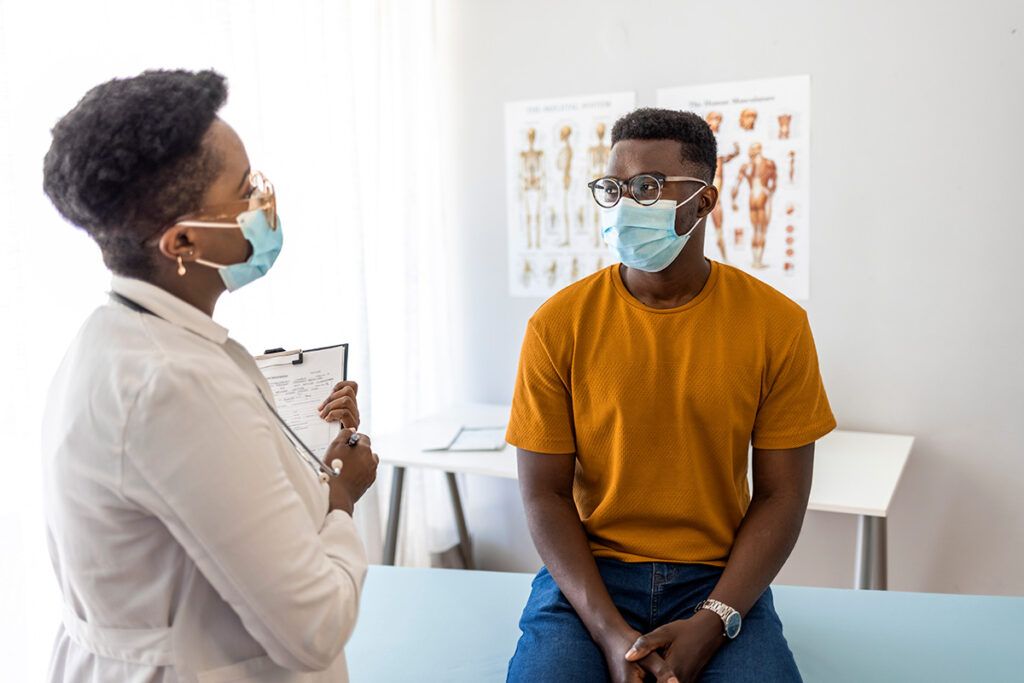Healthcare costs rise yearly for many reasons, including an aging population and increases in the cost of products and services.
To tackle these costs, state and federal governments have expanded funding for programs that offer healthcare at a lower cost. As a result, different options are available for low cost or free healthcare.
Low cost and free healthcare options

A good first step to receiving lower cost healthcare is to determine if you or your family are eligible for Medicaid, a government health insurance program for low income households.
Though it varies by state, most set eligibility for Medicaid at 138% of the federal poverty level (FPL). You can find out if you qualify by contacting your state’s Medicaid agency or by filling out an online application with the Health Insurance Marketplace.
If you don’t qualify for Medicaid or are uninsured, you can still find low cost healthcare options in your area.
Community health centers
You can find community health centers in urban and rural areas that offer care to people without insurance at a lower cost. They provide a range of services, from general primary care to specialized care for mental health and substance misuse.
How much you pay at community health centers depends on your income. You can find out more by contacting your local state department for a list of community health centers and calling them directly to find out their eligibility requirements. You’ll need to have your yearly or monthly household information available.
Free clinics
Free clinics are typically staffed by volunteers and are meant to offer a healthcare safety net for people without insurance and low income households. Depending on the clinic, they offer a range of services, including medical, dental, and mental health services, at no cost.
Your state health department may be able to provide you with information about a free clinic near you, and you can determine your eligibility by calling or visiting the clinic directly.
Sliding scale clinics
Sliding scale clinics offer healthcare on a sliding scale depending on your income. They are often run with a combination of public and private funding.
You can find a sliding scale clinic by contacting your state health department or using the search tool on the National Association of Free and Charitable Clinics website.
Eligibility for low cost or free healthcare
Eligibility for low cost or free healthcare will depend on many factors, including your income and state. It will also vary from clinic to clinic, but most will use predetermined income thresholds.
Most income-based clinics use the latest FPL figures to determine cost. In 2023, the FPL was set at $14,580 for an individual and $24,860 for a family of three.
You can find out which services you qualify for by contacting the clinic directly. They’ll often help you through the process to ensure they can provide you with the most appropriate care and advice.
Low cost insurance plans
Some insurance options are available with low monthly premiums, low out-of-pocket costs, or a combination.
Medicare
Medicare is a government health insurance program offered to anyone age 65 and older or those with specific health conditions. This health insurance is split into different parts:
- Part A: This is your inpatient coverage. It covers eligible hospital stays, medications, and services you receive while you’re an inpatient.
- Part B: This part covers eligible outpatient care and medications you receive while at the doctor’s office. Parts A and B together are often called Original Medicare.
- Part C: This is also called Medicare Advantage and offers a combination of Parts A and B, with some additional coverage, like dental and optical benefits. Private insurance companies offer Medicare Advantage plans, and you can search for a suitable option by visiting the Medicare website.
- Part D: This is also called a prescription drug plan. Private insurers offer these plans in the same way as Medicare Advantage. It covers eligible drugs in both generic and brand-name versions. The drugs are separated into tiers, with drugs in the lowest tier having the lowest copayment.
In some instances, you’ll have to sign up for Medicare, but you’ll automatically become eligible when you turn 65. You can find out more information about your eligibility and how to sign up at Medicare.gov.
Medicaid
This national government health insurance program may be the best free healthcare option for those whose income is below FPL.
You can also fill out an application with the Health Insurance Marketplace that will tell you whether you qualify for Medicaid or another program that can support healthcare costs.
CHIP
A partner program to Medicaid is the Children’s Health Insurance Program (CHIP), which offers low cost health coverage to children whose parents don’t qualify for Medicaid.
The Health Insurance Marketplace can help you determine if your child is eligible for CHIP. Once you complete your application on the Marketplace, a state agent will contact you about enrollment if you qualify.
TRICARE
TRICARE is run by the Department of Defense Military Health System and provides civilian health benefits for members of the U.S. Armed Forces, as well as retired members and their dependents.
You can find out more information about who is eligible and how to access care on the TRICARE website.
Other resources for people on a limited income
There’s a network of online resources and hotlines that can provide you with information about your eligibility and how to apply.
The Health Resources and Services Administration (HRSA) can provide you with a state-by-state guide on where to find free or low cost healthcare locally.
If you need help covering the cost of medications, the free Optum Perks Discount Card could help you save up to 80% on prescription drugs. You can also search for a specific drug here.
